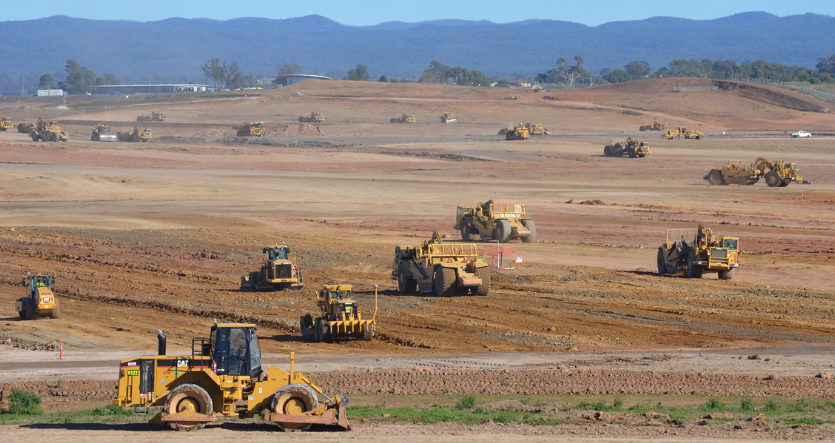In this case, the excavators’ grade control systems continuously record positions throughout the day. At the end of the day, the survey foreman logs directly into the machine via the Trimble WorksManager data hub, downloads the data, and drops it into Trimble Business Center, where it’s compared with the previous day’s work. The updated perimeter model is then sent back to operators through WorksManager each morning, which enables users to publish updates to machines and field devices without having to go to the site.
That said, satellite-based Wi-Fi and high speed internet can be a challenge. A simple job will likely have a supervisor, a surveyor, and a foreman. To maintain data connectivity, these three people would need a cellular plan from a third party on their laptop or tablets – and then have the ability to transfer large quantities of jobsite data back and forth. For three people on site, that’s not bad, but a site with 20 connected machines would require 20 data plans.
Connectivity Means Convenience
Even though the logistics can be tricky, contractors of all sizes are finding ways to take advantage of connectivity that is readily available. Machines must be connected to realise their full potential, which now more than ever includes some kind of task or machine automation. Connectivity enables the automated transfer of instructions from a digital plan to the actions the machine must perform.
Today’s grade control systems, for example, are tightly linked to 3D modeling software, and handheld data collectors are built to handle complex files and 3D datasets. There are a range of connected workflows that collect accurate information and real-time conditions on the job site and allow crews to directly interact with 3D models in real-time.
Connectivity also means learning
By having machines connected and sharing data from the jobsite, operators and owners are able to learn from the field – How does the work completed compare to the work planned? Where did a machine have to work harder than expected? What materials have been moved, to where, and at what cost? Individually, these data points have limited value, but when combined, they unlock significant value that can both help with better overall site management and drive future insights and savings.
This means contractors like Veit & Company, Inc. can work more efficiently, and use what they learn for continuous improvement. The site prep and civil construction specialty contractor relies on 3D grade control on its dozers, excavators, motor graders, and skid steers, and uses Trimble WorksManager to wirelessly transfer data such as 3D constructible models to the construction site.
Colorado-based Zak Dirt also relies on machine control on motor graders, dozers and excavators, and then uses sensor-enabled drones to capture progress – and it’s all connected digitally back in the office. The data from the platform is shared among project managers, surveyors, superintendents, engineers, and others within Zak Dirt, which has facilitated new ways of using worksite data to track progress, quantities and logistics.




